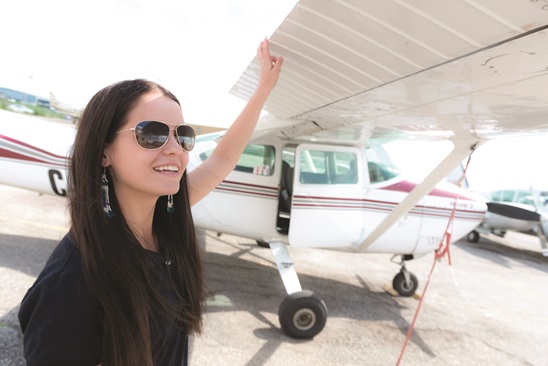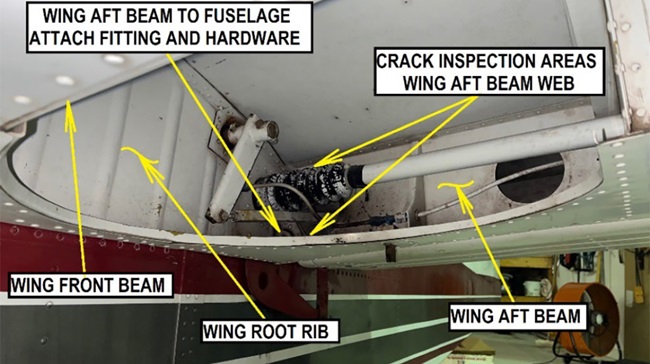
The ability to perform slips effectively and confidently is a tool you will use not only on your checkride, but on nearly every one of your flights for as long as you fly. Of course, there are the accidental slips that occur when a pilot doesn’t apply enough rudder pressure during turns, and doing those on your checkride should be kept to a minimum, if possible.
The designated pilot examiner (DPE) will ask you to demonstrate a couple of intentional slips that are an important part of every good pilot’s bag of skills. There are two types of intentional slips: sideslips and forward slips. And while you may rarely need to do forward slips, you’ll perform a sideslip any time you correct for a crosswind during landing—which is nearly every flight.
Although the primary difference between the two is simply how much rudder deflection is used, they really are two very different maneuvers, with two very different purposes. The forward slip is a great device whenever you need to lose excess altitude and/or airspeed—usually for the purpose of landing—but it also can be helpful during an emergency descent. True, with proper approach planning, forward slips are rarely necessary, but we all have our days.
During the checkride, examiners prefer to see applicants who employ an unsolicited forward slip maneuver if they are high on approach to a simulated engine-out landing, or during another of their landing approaches—thus demonstrating that correlation-level learning has been achieved. When accomplishing a forward slip, first retard the throttle to idle. Leaving power on (above idle) renders the forward slip highly ineffective. This is a surprisingly common error among applicants.
Also, be sure to fully extend the flaps (unless prohibited by the manufacturer) to increase the drag component. This will increase the slip’s effectiveness. Next, make your cross-control inputs by smoothly and simultaneously applying enough upwind aileron to maintain the desired ground track as you apply full opposite rudder while lowering the pitch attitude to maintain the desired descent airspeed. Failure to adequately lower the nose is a common error that leads to airspeed decay toward stall speed, often while close to the ground in a cross-control configuration. This scares examiners, the results of which are never pleasant.
Finally, when you reach your desired approach profile, simply recover from the forward slip by neutralizing the cross-control inputs and adjusting the pitch attitude. Continue the approach or descent as appropriate to the situation.
When making your crosswind landing, which is also a requirement for all checkrides when an actual crosswind exists, it’s time to demonstrate your sideslip maneuver. For the sideslip, instead of using full rudder, apply only as much rudder as is needed to align the nose (longitudinal axis) with the runway while simultaneously applying enough upwind aileron to keep the airplane tracking along the runway centerline (no sideways drift). Be prepared to adjust both rudder and aileron inputs for changing wind conditions.
What makes the sideslip more challenging is the fact that as the airspeed decays during the landing flare, the flight controls become gradually less effective, demanding ever-increasing control inputs to maintain aircraft directional control. And in gusty winds, this can be a huge challenge, especially for student pilots. During training, sideslips often are initiated moments before the actual touchdown. However, beginning the sideslip earlier on the final approach is a powerful teaching technique, because it permits a longer exposure to the maneuver and therefore more learning opportunity for each crosswind landing made. The number of aircraft bent each year while landing in crosswinds is strong evidence that the sideslip maneuver not only is difficult to master, but also proof that its mastery is paramount.
Whatever you do, make sure to spend enough quality time learning, practicing, and mastering these important slip maneuvers. Remember: Full rudder equals forward slip; partial rudder equals sideslip. The extra time and effort you spend now will be well-rewarded—not just on your checkride day, but every time you fly when there’s a crosswind.


